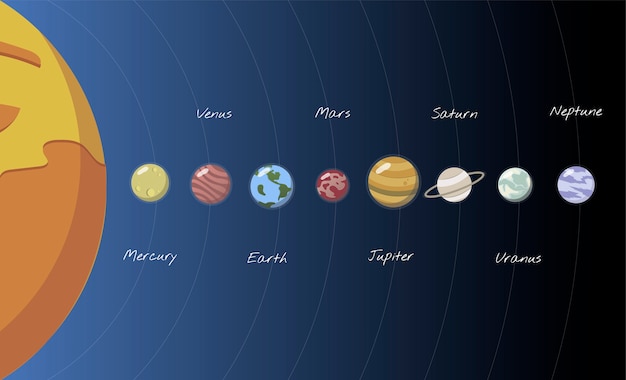Jupiter Facts – Exploring the Largest Planet in Our Solar System

Jupiter is the largest planet in our solar system.
The Great Red Spot on Jupiter is a gigantic, persistent storm.
Jupiter has a whopping 79 moons.
Jupiter’s magnetic field is 20,000 times stronger than Earth’s.
The Jovian atmosphere is composed primarily of hydrogen and helium.
Jupiter has a unique cloud band pattern, with alternating light and dark stripes.
The planet takes nearly 12 Earth years to complete one orbit around the sun.
Jupiter’s powerful gravity influences the orbits of other planets.
The Galilean moons are four of Jupiter’s largest moons, discovered by Galileo Galilei.
Jupiter’s moon Ganymede is the largest moon in our solar system.
The intense pressure on Jupiter’s core may create a metallic hydrogen layer.
Jupiter emits more heat than it receives from the sun.
Jupiter experiences auroras near its poles, similar to Earth’s.
Jupiter’s intense storms create vibrant cloud patterns.
Jupiter’s mass is 2.5 times that of all other planets combined.
The atmospheric temperature on Jupiter can reach -145 degrees Celsius.
Jupiter’s immense size helps protect inner planets from potential threats in space.
The first spacecraft to visit Jupiter was Pioneer 10 in 1973.
NASA’s Juno mission has been studying Jupiter since 20
Jupiter has a faint ring system composed of dust particles.
Jupiter Facts – Exploring the Largest Planet in Our Solar System part 2
Jupiter’s magnetic field interacts with the solar wind, causing beautiful displays of auroras.
The largest moon of Jupiter, Ganymede, is even bigger than the planet Mercury.
Jupiter could potentially have a solid core made of heavy elements.
Jupiter’s gravity creates tidal forces that can cause volcanic activity on its moons.
The immense gravitational pull of Jupiter can slingshot spacecraft for faster interplanetary travel.
The planet’s name comes from the king of the Roman gods.
Jupiter’s largest moon, Ganymede, has its own magnetic field.
The Great Red Spot on Jupiter is shrinking and becoming more circular.
Jupiter’s magnetic field extends beyond the orbit of Saturn.
A day on Jupiter lasts only about 10 hours.
Jupiter has a thin, faint ring system made up of small rocks and dust.
Jupiter’s moon Europa is believed to have a subsurface ocean.
The first detailed images of Jupiter were obtained by the Voyager spacecraft in 1979.
Jupiter’s moons Io, Europa, Ganymede, and Callisto are often referred to as the Galilean moons.
The gravitational forces on Jupiter cause strong tidal heating, leading to volcanic activity on its moon Io.
Jupiter has been visited by multiple spacecraft, including Galileo, Cassini, and the Hubble Space Telescope.
Jupiter is visible from Earth with the naked eye and is often referred to as the king of the planets.
The largest storm on Jupiter, the Great Red Spot, has been raging for at least 400 years.
Jupiter’s fast rotation causes its equator to bulge out slightly.
The gas giant’s iconic banded appearance is caused by its jet streams and powerful storms.
Jupiter’s immense size and gravity make it a natural shield, protecting inner planets from many asteroids and comets.
The atmosphere of Jupiter is so dense that a spacecraft would be crushed before reaching its solid core.
The vast amount of hydrogen in Jupiter’s atmosphere gives it a distinct orange hue.
Jupiter’s magnetic field is responsible for trapping particles from the sun, creating intense radiation belts.
The study of Jupiter and its moons has provided valuable insights into the formation and evolution of our solar system.

